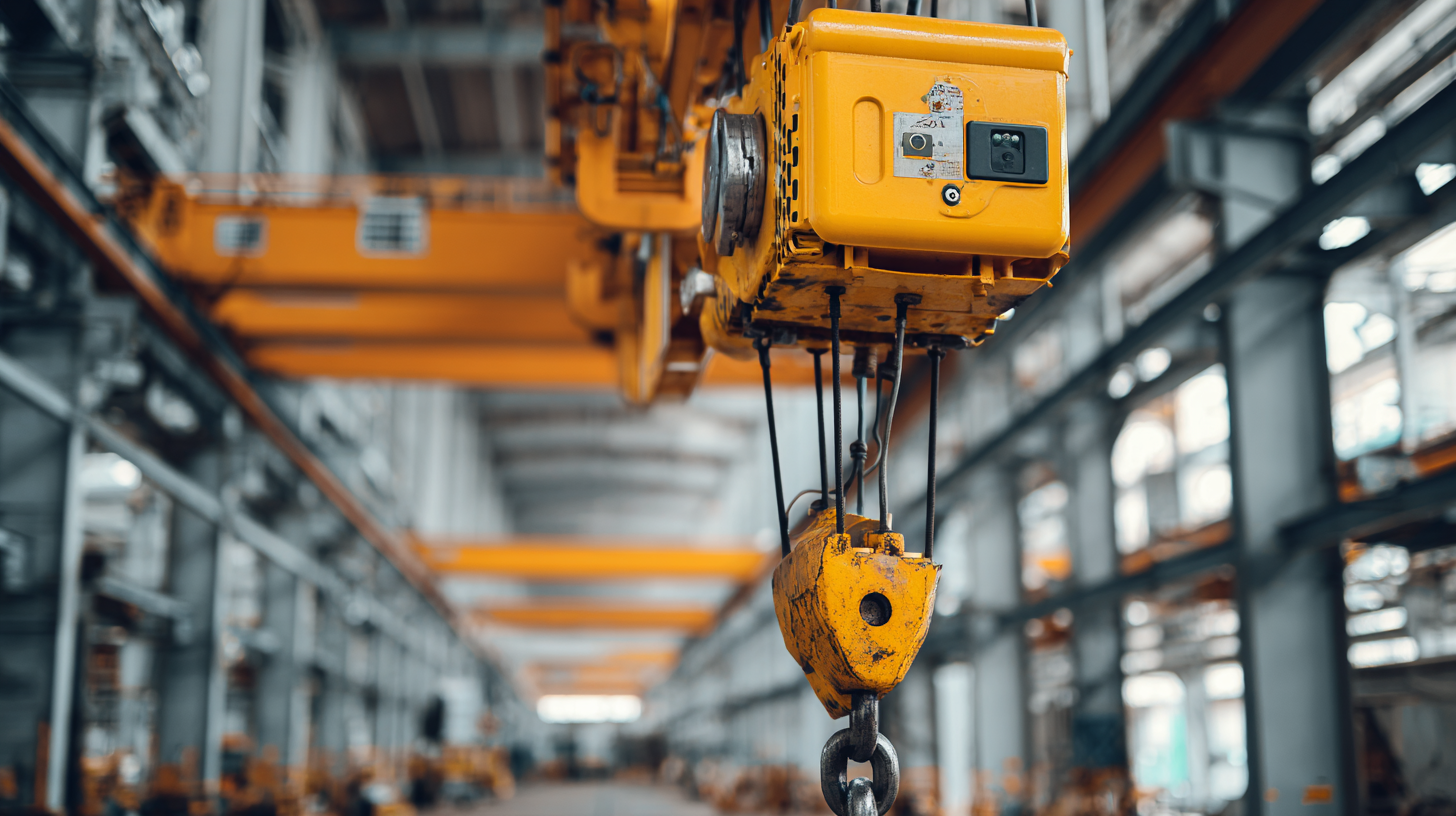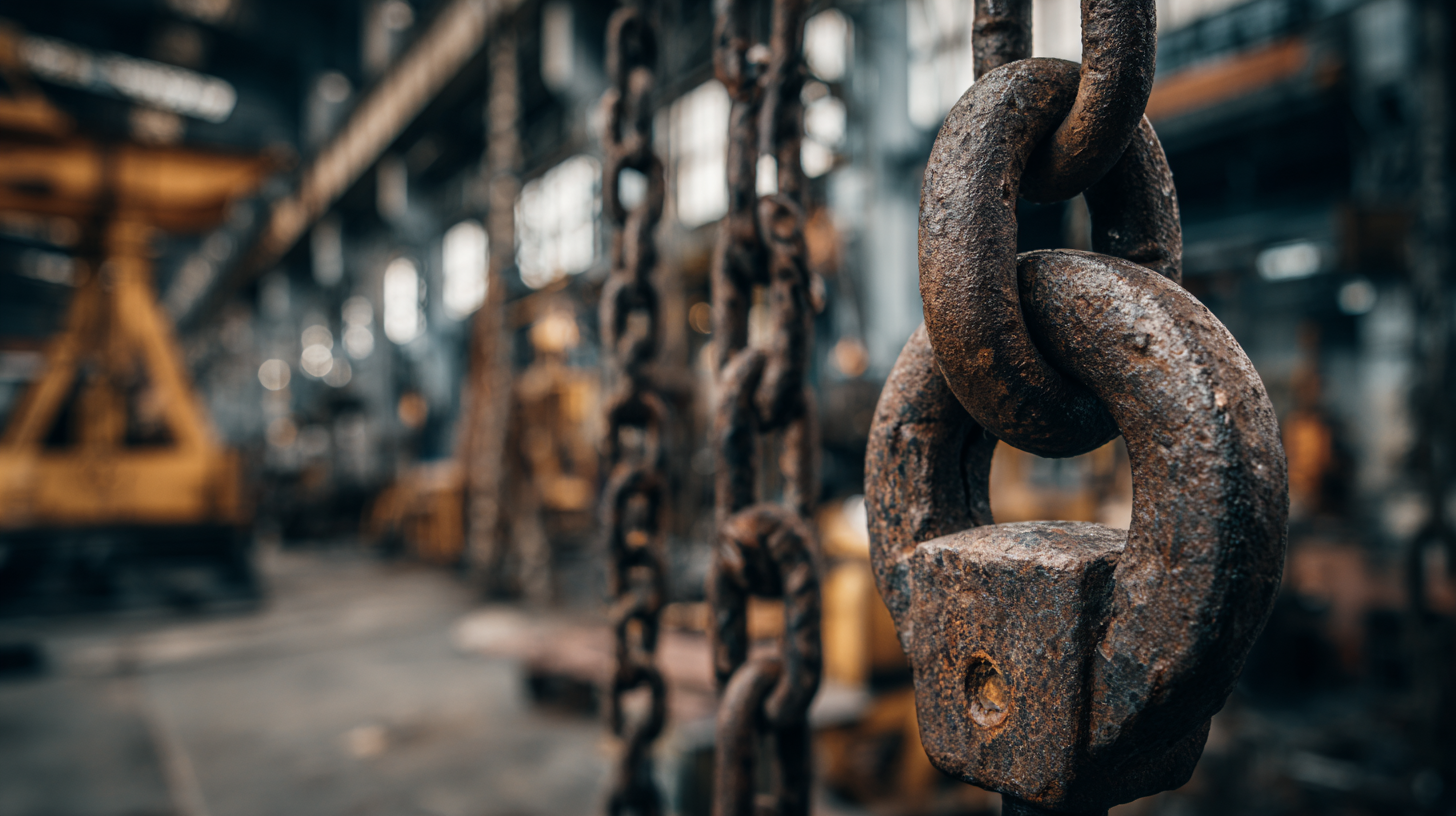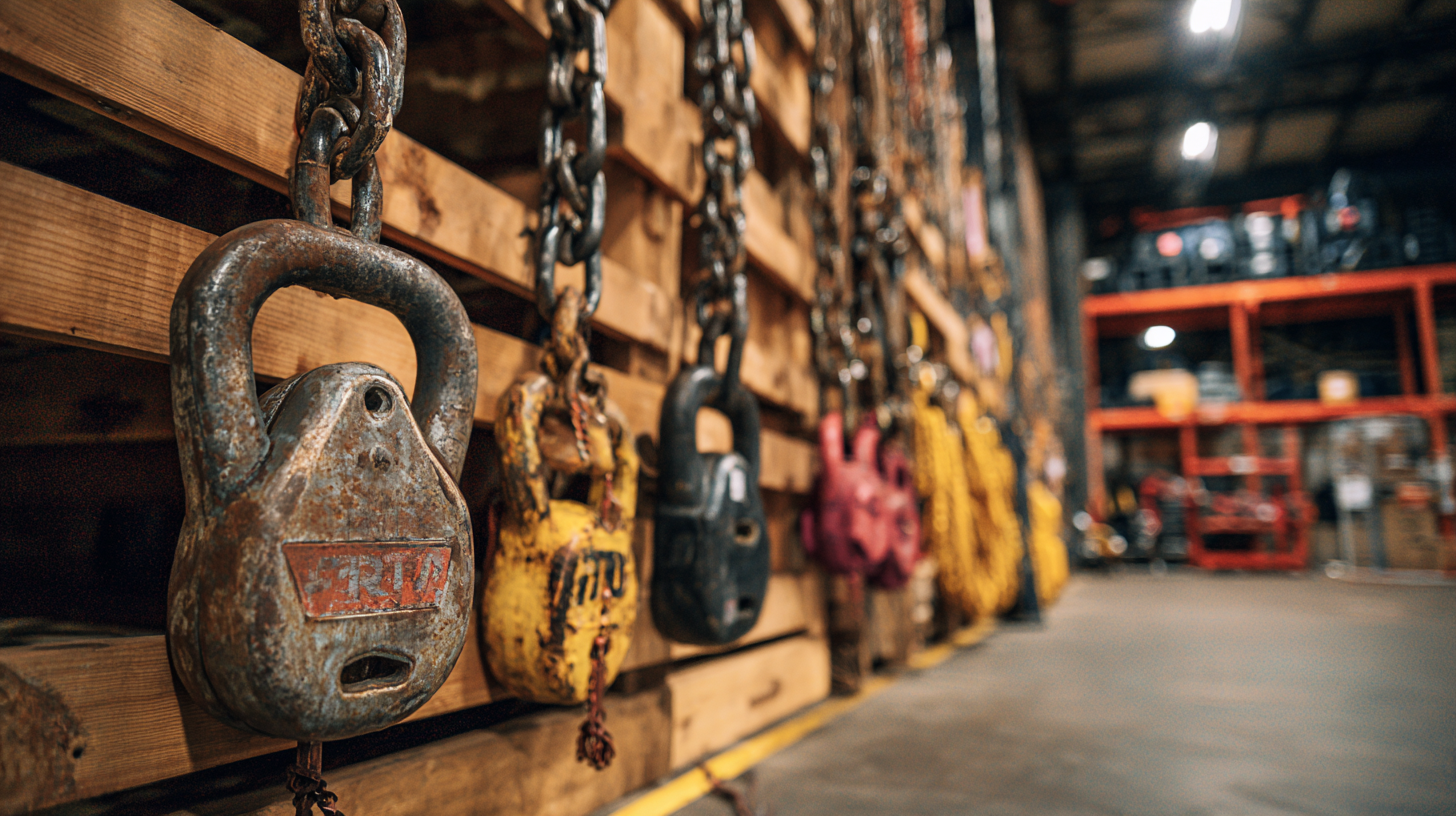Top Strategies for Maximizing Efficiency with the Best Chain Hoists
In today's fast-paced industrial landscape, maximizing efficiency is paramount, and one of the key tools aiding in this endeavor is the use of Chain Hoists. These versatile lifting devices play a crucial role across various sectors, from construction and manufacturing to warehousing and logistics. However, despite their importance, many industries encounter specific challenges when implementing Chain Hoists, such as operational inefficiencies, safety concerns, and maintenance issues. This blog will delve into the top strategies for optimizing the performance of Chain Hoists, exploring industry-specific applications and the common problems associated with their use. By understanding these elements, businesses can harness the full potential of Chain Hoists, leading to improved productivity and enhanced operational success.

Choosing the Right Chain Hoist for Your Specific Needs
When it comes to selecting the right chain hoist for your specific needs, a thorough understanding of various applications is essential. Different industries have unique requirements, and understanding these can significantly influence your decision. For instance, a construction site may require a heavy-duty chain hoist capable of lifting significant weights efficiently, while an assembly line might benefit from a lightweight, portable option that allows for quick adjustments. Prioritizing your lifting capacity needs and the environment in which the hoist will be used is crucial for optimizing performance.

Additionally, consider the hoist's operational features, such as speed, control systems, and energy efficiency. Modern chain hoists come equipped with advanced technology that can enhance productivity and ease of use. For example, variable speed options allow for precise lifting operations, critical in sensitive work environments. Assessing the maintenance requirements and durability of the hoist is also important, as these factors can impact long-term efficiency. By carefully evaluating these elements, you can choose a chain hoist that not only meets your specifications but also contributes to a less complex and more efficient workflow.
Understanding Load Capacity: Ensuring Safety and Efficiency
When selecting a chain hoist, understanding load capacity is paramount to ensuring both safety and efficiency. According to a report by the Material Handling Industry of America, improper load handling accounts for nearly 28% of workplace injuries in the lifting sector. This staggering statistic highlights the importance of adhering to the manufacturer’s specifications for load capacity, which is typically based on the hoist's design and material strength. For instance, a hoist rated for 1 ton may not perform safely with a 1.5-ton load, leading to failure and potential accidents.
Moreover, it's critical to account for dynamic loads, which can significantly affect performance. A study from the National Institute for Occupational Safety and Health (NIOSH) indicates that factors such as swinging loads and unexpected movements can increase stress on the hoist by as much as 50%. Therefore, operators should not only consider the static load; they must also incorporate these dynamic factors into their calculations to maximize operational safety. This integrated approach ensures that chain hoists operate efficiently while maintaining an unwavering focus on workplace safety.
Maintenance Tips to Extend the Life of Your Chain Hoist
Chain hoists are invaluable tools in various industries, but regular maintenance is essential to extend their lifespan and ensure optimal performance. One of the most critical maintenance tips is to routinely inspect the hoist for signs of wear and tear. Check the chain, hooks, and gears for any cracks, rust, or deformation. Addressing these issues promptly can prevent larger problems down the line, ensuring safety and efficiency during operation.
Another important aspect of maintaining a chain hoist is proper lubrication. Keep the chain and moving parts well-lubricated to reduce friction and wear. Use the manufacturer-recommended lubricants, applying them strategically to ensure they reach all necessary components. Additionally, clean the hoist regularly to remove dust and debris that can hinder performance. A clean hoist not only looks professional but operates more efficiently, reducing the risk of overheating and mechanical failures. By following these maintenance tips, you can maximize the lifespan of your chain hoist and enhance productivity in your operations.

Operational Techniques to Improve Lifting Efficiency
When it comes to optimizing lifting operations, understanding the best practices and techniques is crucial to enhancing efficiency with chain hoists. The lifting industry has shown that adopting advanced operational techniques can reduce downtime and improve productivity by up to 30%. One of the key strategies includes regular maintenance checks of the hoists, which not only prolongs the lifespan of the equipment but also ensures safety during operations. For instance, a well-maintained chain hoist operating at peak performance can lift more efficiently, minimizing energy consumption and operational costs.
Tips: Always inspect the chain and hooks before use to prevent any potential failures during lifting tasks. Additionally, employing the right chain hoist for the weight and height requirements can significantly affect efficiency. Data from industry reports suggest that using the correct hoist can decrease operational strain and enhance workflow, leading to a more effective lifting process.
Another effective technique is training personnel on proper lifting methods and safety protocols. A study conducted by the Occupational Safety and Health Administration (OSHA) revealed that organizations implementing structured training programs saw a 40% reduction in workplace accidents involving lifting equipment. Proper training not only ensures compliance with safety standards but also empowers workers to maximize the capabilities of their hoists, ultimately increasing overall operational efficiency.
Integrating Technology: Smart Hoists and Remote Monitoring Solutions
In today's fast-paced industrial environment, integrating technology, particularly smart hoists and remote monitoring solutions, is crucial for maximizing efficiency in operations. According to a report by MarketsandMarkets, the global smart hoist market is projected to reach $1.2 billion by 2025, showcasing the increasing adoption of advanced technologies in material handling. These smart hoists not only streamline operations but also enhance safety protocols, reducing the risk of accidents caused by equipment failure.
Tips for maximizing the efficiency of smart hoists include utilizing data analytics for real-time performance monitoring. This allows businesses to predict maintenance needs proactively, minimizing downtime. The implementation of IoT-connected hoists can provide insights into operational performance, leading to data-driven decisions that improve workflow. A 2020 industry survey indicated that organizations employing remote monitoring solutions witnessed a 20% reduction in maintenance costs, illustrating the tangible benefits of adopting these technologies.
Furthermore, training personnel to understand and operate smart hoists effectively is essential. By investing in workforce education, companies can leverage the full potential of these advanced systems, enhancing both productivity and safety. Regularly updating training materials to incorporate new technologies ensures that teams remain confident and capable of operating within an increasingly digital landscape.
Top Strategies for Maximizing Efficiency with the Best Chain Hoists - Integrating Technology: Smart Hoists and Remote Monitoring Solutions
| Strategy | Description | Benefits | Technology Integration |
|---|---|---|---|
| Regular Maintenance | Implementing a scheduled maintenance program to keep equipment in top condition. | Increased lifespan of hoists, reduced downtime. | Use of diagnostic tools to predict maintenance needs. |
| Smart Hoists | Upgrading to smart hoists with IoT capabilities for real-time data tracking. | Improved operational insights, better load management. | Integration with cloud-based monitoring systems. |
| Remote Monitoring | Using remote monitoring solutions to oversee hoist performance. | Enhanced safety, real-time alerts for malfunctions. | Mobile apps and dashboards for easy access. |
| Training and Education | Providing training for operators to use hoisting equipment efficiently. | Increased productivity, decreased risk of accidents. | E-learning platforms for training resources. |
| Load Management | Adopting load management technologies to optimize hoist operations. | Reduced energy consumption, prolonged equipment life. | Data analytics to monitor and adjust load patterns. |
